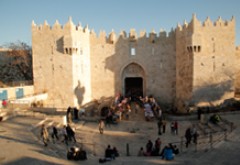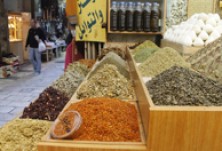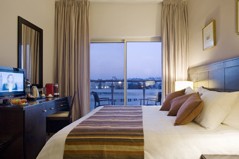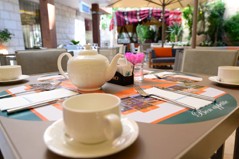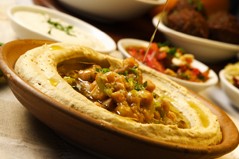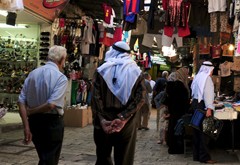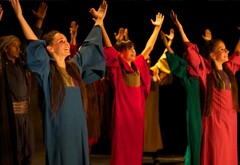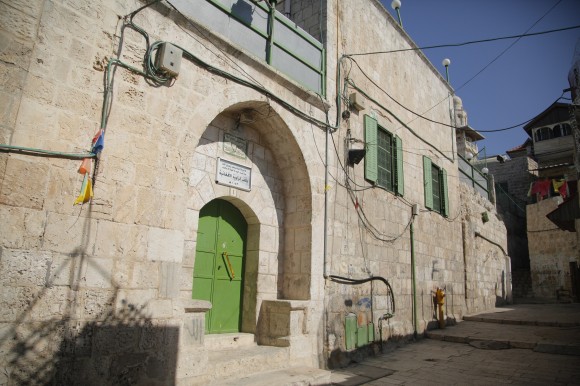To visit al-Qadiriyya, one should backtrack to Mujahidin Street and walk towards al-Wad Street, turn left at Barquq Street, and walk a few dozen meters to the southern corner of al-Zawiya al-Qadiriyya. This Zawiya maintained its original architectural character and continues to perform its mission. Its followers insist on appearing at the Zawiya and meeting with their esteemed Shaikh ‘Abed al- Karim al-Afaghani at least twice a week, in addition to Fridays. Permission is needed to visit the Zawiya interior. Visitors should observe quiet, respect and modesty.
Name
Al-Qadiriyya is named after the dignified scholar Sheikh ‘Abed al Qader al-Jilani, the founder and pioneer of the Qadiri Sufi order in the Islamic world. This Zawiya is currently known as the Afghaniyya, due to a number of Jerusalem Afghanis residing in it over the past few decades, and because it has recently been managed by these groups.
Founder
This Zawiya was built by Muhammad Pasha, governor of Jerusalem (1632 - 33 AD / 1043 H), who was known for sponsoring Sufi institutions in Jerusalem and attending to the city’s architecture and architectural development. He loved Jerusalem and resided in it after he retired, and was a wealthy trader of livestock. Muhammad Pasha allocated a large sum of money for his Zawiya’s running expenses in the form of an endowment, whereby the allocated amount is invested in trade and the necessary expenses are provided for from the annual profit.
Entrance
The Zawiya’s only entrance has a pointed arch projecting a humble image to the visitor, particularly if compared to the Dawadariyya entrance. It is elevated by three steps above street level and flanked by a stone benches on both sides. Above the entrance is an inscription showing the Zawiya’s name, order , founder, and the date on which it was built.
Facilities
The entrance leads through a short passage to a rectangular, though irregular, courtyard, most of which is landscaped with plants and trees, coinciding with the description of the Waqf four centuries ago. The courtyard is surrounded from the south and west by eleven small cells for Sufis. The northern side houses service facilities, including the Sufi meeting hall, which comprises two levels, a lower, original one and an upper one which was added later on. The latter is used as a residence for the Zawiya’s sheikh. The Zawiya has a elevated mosque to the east of the entrance, which can be accessed by a staircase

